SAHIF Blog
March 2021 - Housing Finance Opportunities for End-Users
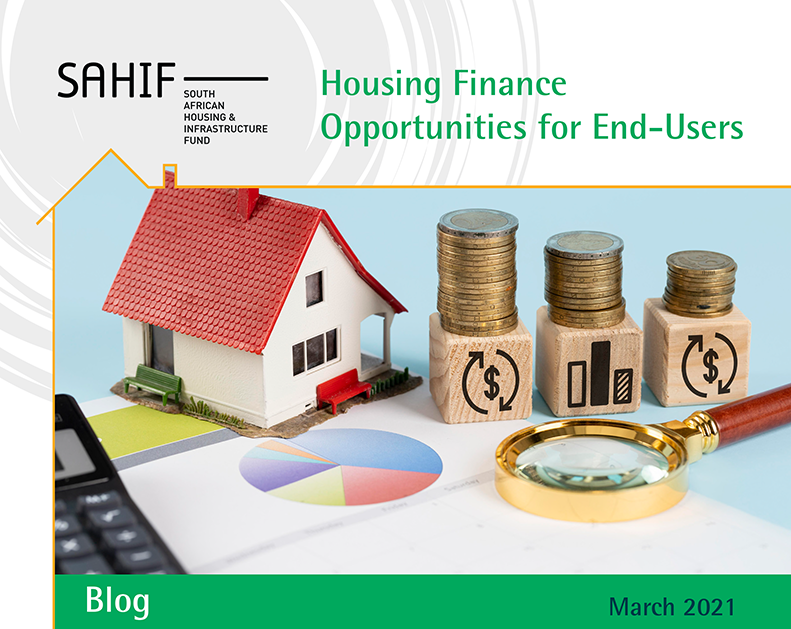
Introduction
Housing finance plays an important role in meeting the demand and need for housing. From an end-user perspective, access to housing finance enables individuals or households to be able to shelter themselves and can be used to acquire a house (new build or existing housing stock), to construct a house at one go (typically within a year) or to build incrementally over time (typically over 3 years or more). Housing finance also provides a means through which houses can be maintained, renovated or reconstructed. End-user finance can be required on both the supply or demand side of the housing value chain, dependent on one’s decision to either build or purchase. For either of these options, there are different types of financing that an end user has access to.
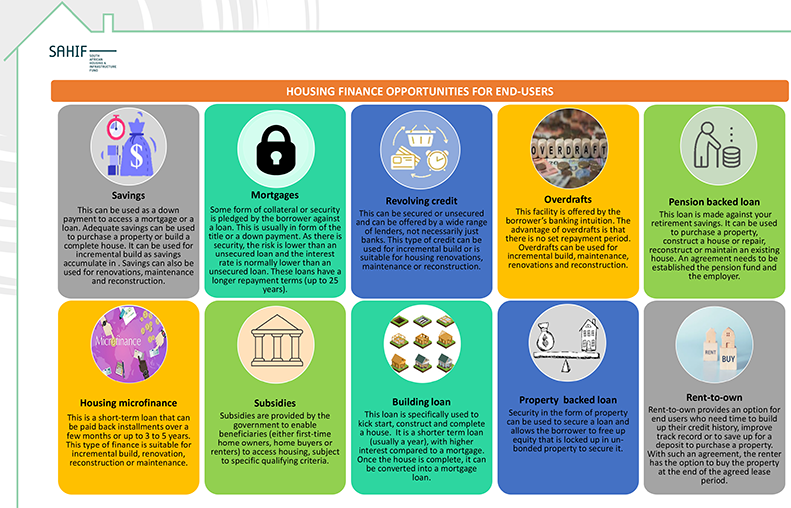
December 2020 - Funding for Small Scale Developers - How do we get that first investment?
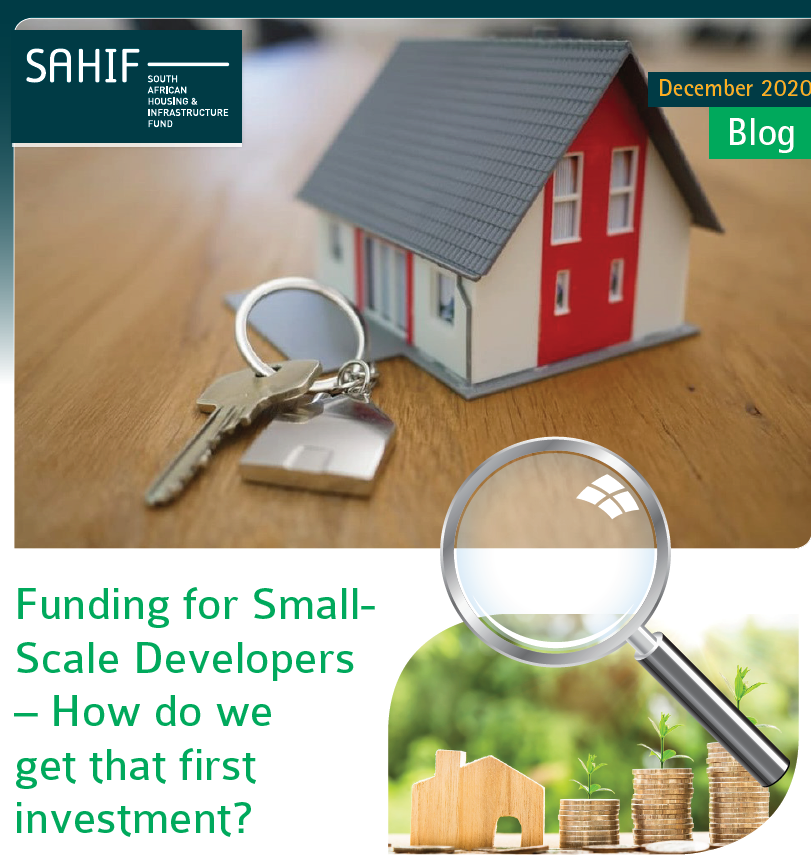
Acquiring and securing finance tends to be easier for well-established developers in comparison to first time developers or small-scale developers with limited experience. However, there are ways in which small-scale developers can penetrate the housing sector through considering different financial products and opportunities which are highlighted below.
Financial Products or Funding Opportunities for Small Scale Developers
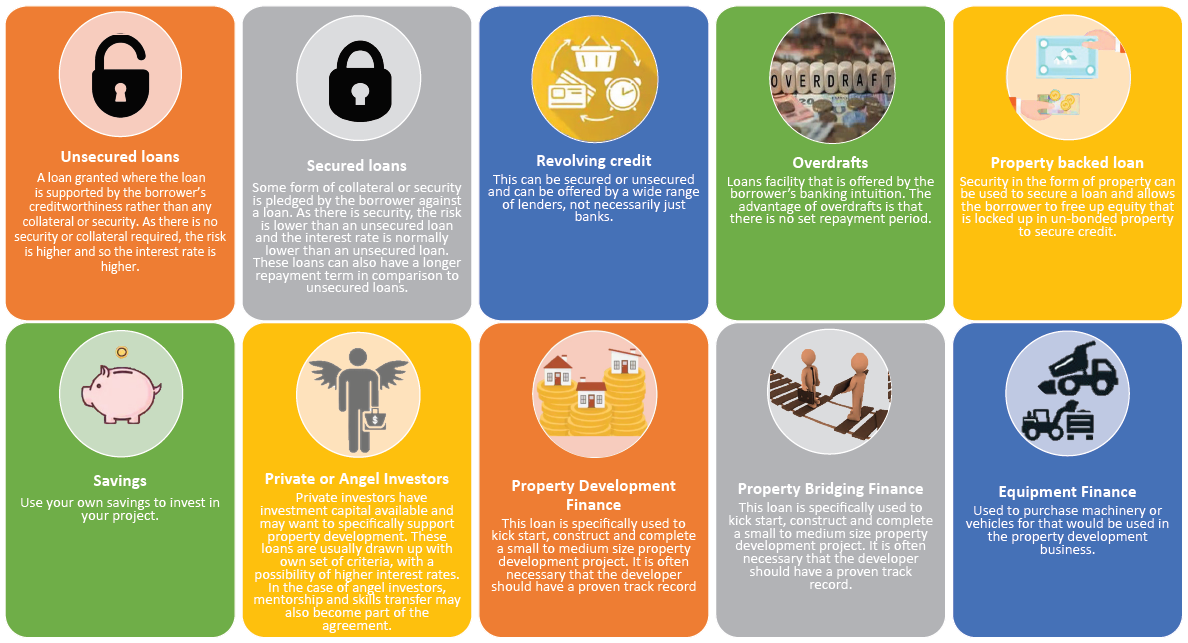
Considerations to Attract Capital
Here are some critical drivers that should be considered when sourcing finances for housing development projects.

November 2020
Alternative Building
Technologies

The growing numbers of urbanisation globally, interventions to support the rapid delivery of affordable and sustainable shelter have been developed in response to the challenge. Most of the interventions employed in the earlier years, were of mass production to achieve speed of delivery to market. However, with the challenges of rapid urbanisation and technological advancements around the sustainability conversation of climate change - more sustainability integrations have been made to the materials of delivery of alternative building technologies (ABT).
Alternative building technologies (ABT) that encompass more economically effective and environmentally friendly building materials and construction methods are being considered and included in the production of housing, to make it quicker, easier and cheaper to build compared to traditionally built houses using bricks and mortar. Using alternative building technologies can also makes it easier to provide emergency shelter when disasters such as flooding, heavy storms, earthquakes and even more recently diseases such as Covid-19 pandemic strikes, or even be used to make houses more resilient against the impacts of climate change. As indicated in SAHIF's High-Level Market Assessment, a growing number of developments are starting to employ principles of green building and sustainability to design, construct, operate and maintain buildings which can reduce the operating and maintenance cost of housing and also make it more sustainable. This not only creates affordable housing opportunities but also impacts on a broader range of factors such as human health and well-being as well as quality of life, extending beyond just the individual footprint of the house including community-wide benefits.
Low income households do need access to affordable housing, and sustainable construction can play an important role in realising this. Sustainable construction is whereby ecological principles are put in place or practiced to create a healthy environment. Kibert states that sustainable construction focuses on six principles: "conserve, reuse, recycle/renew, protect nature, create non-toxic and high quality." Sustainable construction's main aim is to reduce the industry's impact on the environment by utilizing sustainable development practices, employing energy efficiency, and taking advantage of green building technology. Construction techniques, resources, and building practices have evolved over the years, and with the increased interest in sustainability and energy conservation, new methods of construction that focus on sustainability have been developed. Existing buildings can also be retrofitted with green building technologies to make it more sustainable and cost effective to operate. There are two things that go into sustainable construction: the materials that are used and the methods that are utilized.
Figure 1: Alternative Building Materials Opportunities
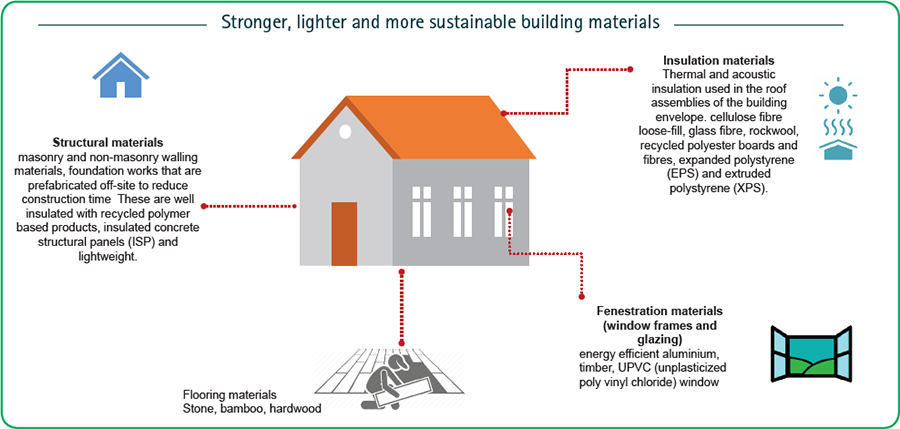
Figure 2: Application of Key Methods to House (Internal)
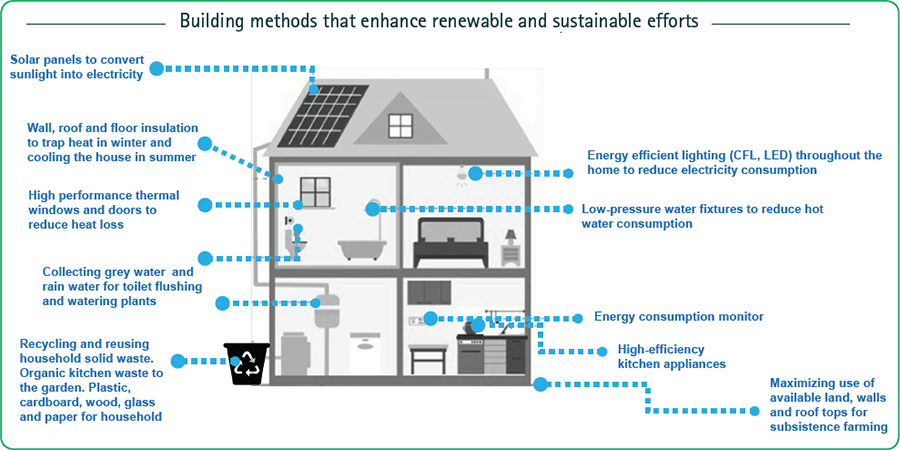
Figure 3: Application of Key Methods to House (External)
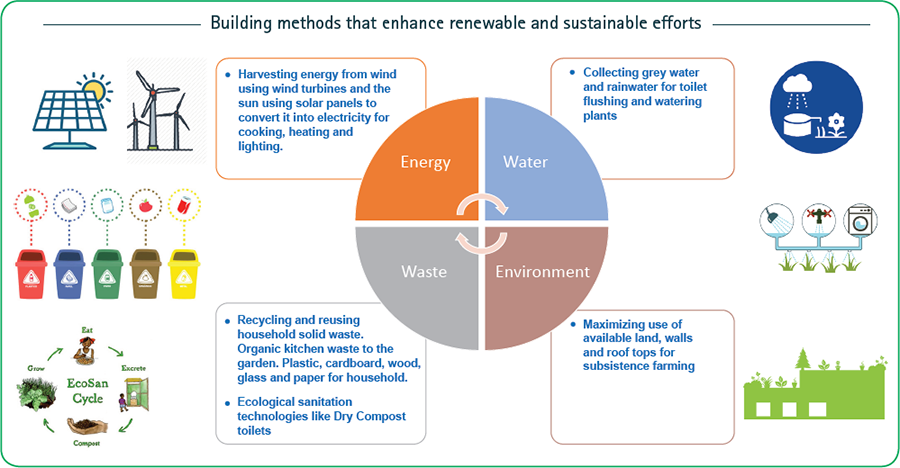
October 2020
The Developer's Tool: "The land
preparation process in South Africa"

A key decision that needs to be made at the outset relates to the location and characteristics of the intended development site. Depending on the type of project, some or all of the following factors need to be taken into consideration:
- The location of the land may have to align with national and provincial strategic objectives as outlined in Spatial Development Frameworks and it may have to adhere to spatial targeting requirements.
- The location of the land may also have to align with local development objectives as outlined in the relevant Integrated Development Plan (IDP), specifically the Spatial Development Framework (SDF), Land Use Management Schemes, Precinct plans, Built Environment Performance Plan (BEPP) or any specific Sector Plans (e.g. Housing/Human settlements, Water, Electricity Sector Plans).
- The potential for integrating the development into the existing settlement - access to transport, economic activities, amenities and services.
- The physical characteristics of the land, including the natural environment and ecology, topography, geology and soil conditions, natural drainage, plot size and shape, other landscape features such as existing buildings on site, light poles or overhanging power cables, etc. that need to be taken into consideration.
- The local context - whether the setting is rural, urban or peri-urban, the nature of the immediate surrounding environment, built environment and neighbourhoods, demographic characteristics, accessibility to amenities etc.
- Zoning and land use, land claims, servitudes, building lines, ownership and other legal aspects as well as adjacent property zoning and land use.
- Accessibility and linkages to transport infrastructure (roads, footpaths, pedestrian walkways, cycling lanes, etc.), storm water drainage systems, bulk service networks such as water pipelines, electricity powerlines and grids, sewer lines as well as their existing thresholds.
- The end-user characteristics/target market.
- Factoring the existing and/or future consumption of the development and/or end user in terms of water, electricity, sanitation, sewer etc.
Figure 1: Road map for servicing land for a developer
Land Development Process
It is crucial that one researches local requirements during this process, as there are a number of regulations around installing and operating electricity, sewer connections water and roads to a property. Regulations differ across the country.
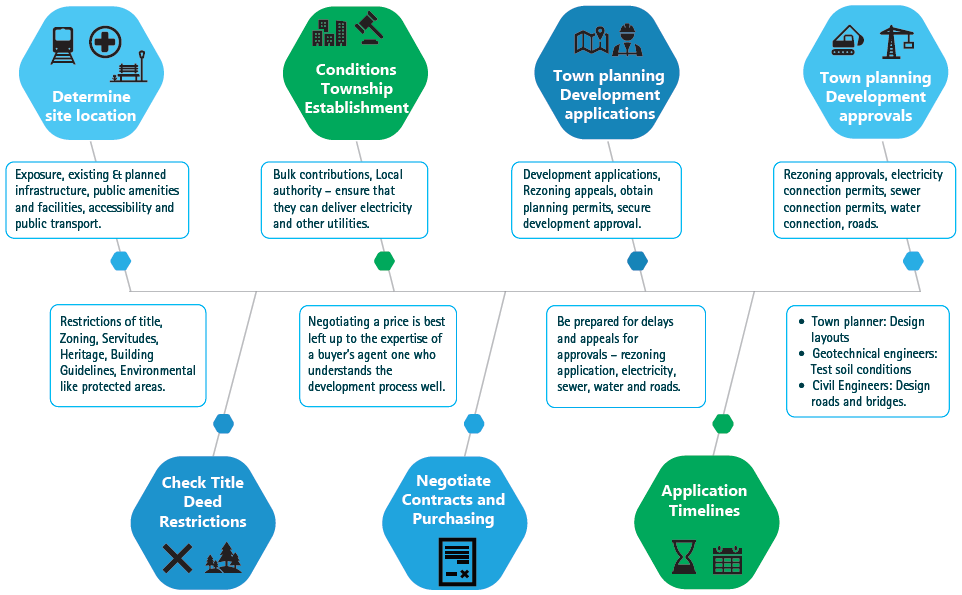
Figure 2: Land Development Process & Stakeholders
Land Development Process and Stakeholders
It is crucial that one researches local requirements during this process, as there are a number of regulations around installing and operating electricity, sewer connections water and roads to a property. Regulations differ across the country.

Figure 3: Key stakeholders in the Land development process (Incl. governmental role players)
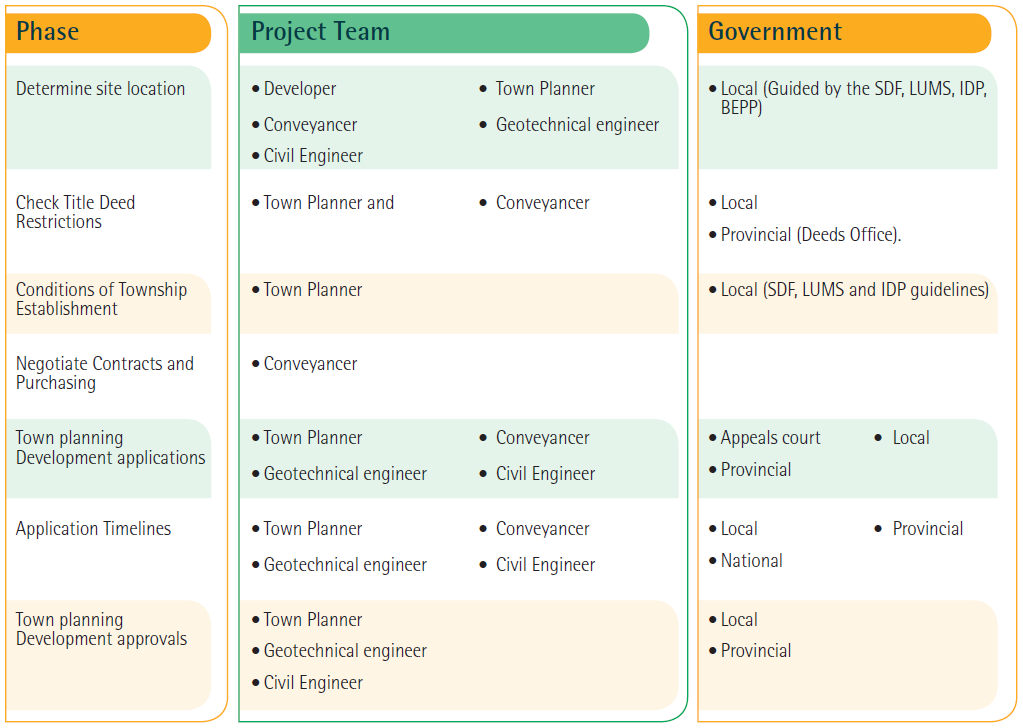
Figure 4: Examples of Governmental Stakeholder Involved in the Land Development Process

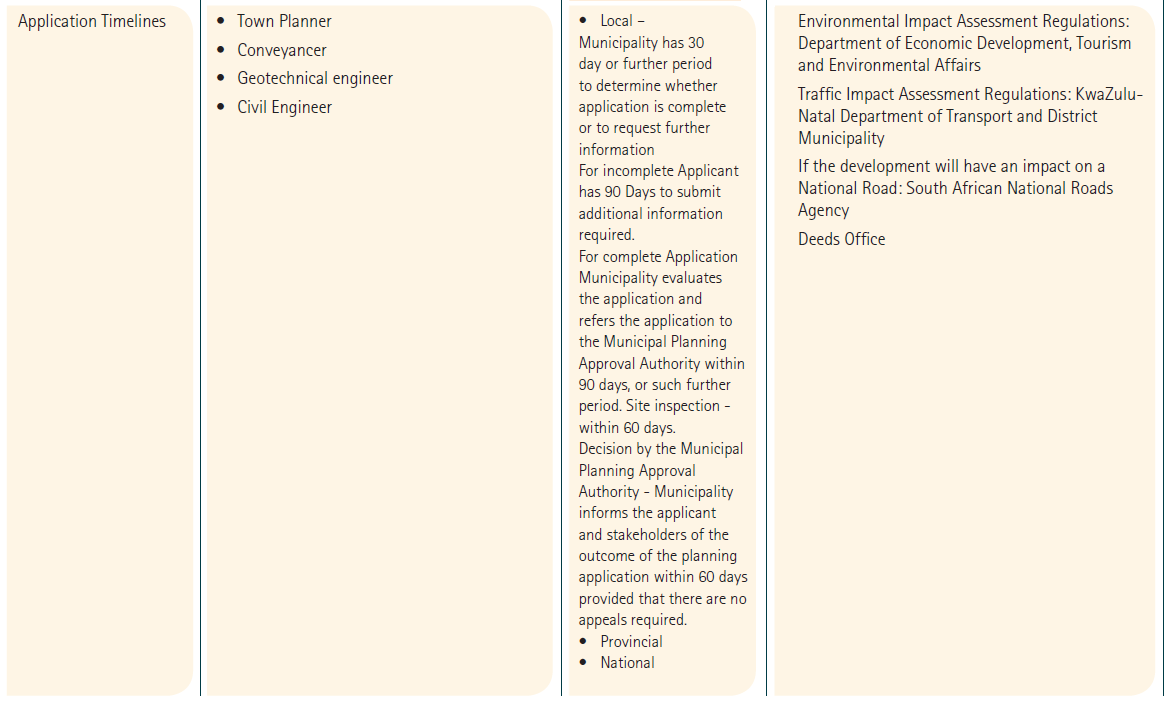

September 2020
Reflecting on Land ownership and opportunities for
affordable housing development in South Africa
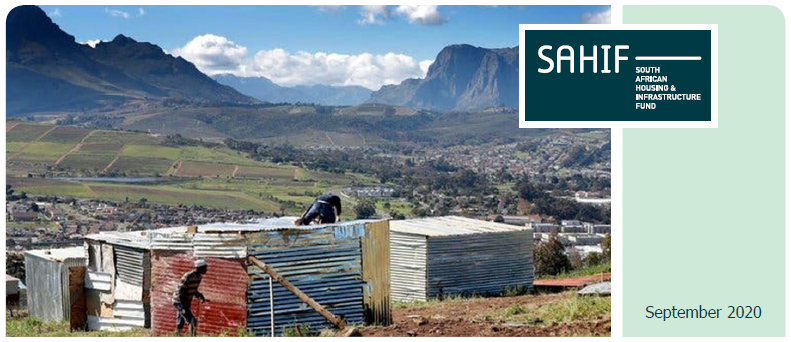
Land acquisition and assembly is the primary step of, and core input into, the housing delivery value chain. However, there are a number of factors that can impact on the access to adequate and suitably located land for housing development and it is important to understand the dynamics of land markets in South Africa that impact on housing delivery. This particular blog reflects on the history of land in South Africa, tenure and property rights and the legislation that governs land, land development and ownership which includes the opportunities that lay ahead as we observe South Africa's land expropriation bill being amended.
1. Reflecting on Land Matters in SA
To understand South Africa's present-day land issues and its complexities, it is useful to reflect on the history of land and property laws focusing on three historical periods: colonialism (beginning in the 17th century), the apartheid era (1948 to 1994), and democratic governance (1994 and beyond). The year 1652 saw the first arrival of colonialists with their own administrations and legislative frameworks. The initial Dutch settlers establishing a permanent settlement at Cape Town and in 1672 laid claim and ownership of the Cape territory. Roman-Dutch law formed the common law of the land and to a lesser extent, English property law. The dispossession of land from indigenous South Africans began as early as then, with proceeding years enactment of laws and legislative frameworks that spatially segregated people based on their race, with majority of land ownership tipping in the favour of the minority. The Natives Land Act No 27 of 1913 established land reserves with only 7.3% of South Africa's total land area (and later expanded to 13% through the 1936 Native Trust and Land Act of South Africa) to the black population. The Act prohibited Black South Africans from buying or occupying land beyond the reserves as this was deemed illegal.
During the Apartheid regime, racial segregation was further entrenched and deepened. A series of land Acts set aside more than 80% of the country's land for the white minority, and a pass law system which required non-whites to carry documents authorizing their presence in restricted areas e.g. If they had employment in a restricted area. The Group Areas Act further demarcated South Africa into areas for specific race groups to live or to operate businesses, resulting in further dispossession of land, displacement and forced mass removals of people from their homes into these designated areas. Productive land was taken away from black families and indigenous South Africans were largely denied tenure rights and by 1994, 40% of the country's population were living in extreme poverty.
South Africa became a constitutional democracy since 1994, however the spatial segregation, economic and social impacts of colonialism and, more so, the Apartheid regime are still very much present in South African society and have contributed to the gaps between land accessibility and property ownership. As a result of this history, land issues remain highly contested in South Africa as current governing structures are driven to address spatial injustices and the resulting complexities of land access, land tenure and land use management through intensive reforms since 1994. South Africa is still challenged to dismantle a fragmented spatial and tenure system.

2. Legislative aspects
Since the election of a democratic government in 1994, South Africa has implemented extensive reform to address inequalities in access to land. There are various pieces of acts and policies that provide directives or guidelines for land identification, addressing land and land use development, land and property ownership as well spatial transformation, some of which are listed below:
- The Constitution of the Republic of South Africa
- Section 25. Property
- Spatial Planning and Land Use Management Act 16 of 2013 (SPLUMA)
- Expropriation Act 63 of 1975
- Sectional Titles Act 95 of 1986
- Prevention of Illegal Evictions Act 19 of 1998
- Extension of Security Tenure Act 62 of 1997
- Land Reform (Labour Tenants) Act 3 of 1996
- The Interim Protection of Informal Land Rights Act 31 of 1996
- Restitution of Land Rights Act 22 of 1994
- Land Titles Adjustment Act 111 of 1993
- Infrastructure Development Act 23 of 2014
- Deeds Registries Act 47 of 1937
- Land Survey Act 8 of 1997
- Property Valuation Act 17 of 2014
- Electronic Deeds Registration Systems Act 19 of 2019
- Municipal Systems Act 32 of 2000
- Municipal By-laws
Figure 1: Timeline showing some of the key land related laws

3. Government updates South Africa's land expropriation bill
The bills is part of the work of government in ensuring redress and fulfilling the aspirations of the people to have an equitable society. The bill comprehensively covers the various areas and instances where land can be expropriated with the conscious view on the various uses of the land opportunities, these including - agriculture, human settlements and industrial development.
The bill is set to replace the current Expropriation Act of 1975, and clearly how and when expropriation can take place in South Africa.
Key focuses of the bill of the instances when land may be expropriated without compensation includes:
- Where the land is not being used and the owner's main purpose is not to develop the land or use it to generate income, but to benefit from an appreciation of its market value;
- Where an organ of state holds land that it is not using for its core functions and is not reasonably likely to require the land for its future activities in that regard, and the organ of state acquired the land for no consideration;
- Where an owner has abandoned the land by failing to exercise control over it - notwithstanding registration of ownership in terms of the Deeds Registries Act;
- Where the market value of the land is equivalent to, or less than, the present value of direct state investment or subsidy in the acquisition and beneficial capital improvement of the land;
- When the nature or condition of the property poses a health, safety or physical risk to persons or other property.
South African land matter, from policy to its tenures - may continue to remain a work in progress for reforms as views for how redress should occur specifically as spatial reform and prime land occupation remain visibly unaddressed in their form.
One of the laws that will have greater impact on land and land development this year is the Spatial Planning and Land Use Management Act 16 of 2013 (SPLUMA). SPLUMA, which came into effect in 2015, was established to provide a uniform system of spatial planning and land use management throughout South Africa in order for municipalities to apply land use control. SPLUMA focuses on four principals of spatial justice, spatial sustainability, spatial resilience, and efficient and good administration to guide land use governance. According to new legislation all municipalities will have to be compliant with the SPLUMA by October 2020, and will have to adopt and approve a single land use scheme over their area of jurisdiction accompanied by municipal spatial planning and land use management by-laws. This will have an impact on land and its development and affects all properties which may include residential, industrial, commercial, tribal and farm land. State land is also subject to the SPLUMA legislation. It affects those applying for land developments or new sectional title schemes. By-laws differ from municipality to municipality, with some municipalities requiring a SPLUMA certificate to be completed before any property can be registered with the National Deeds office, be it new erf in an approved new township establishment, subdivision of erf in an approved township, consolidation of erven or sectional title scheme registration.
4. Tenure and ownership
Housing investments depend on land having a legal title and security through tenure and property rights. Land tenure refers to the mode by which land is held or owned, or the set of relationships between people concerning land or the product on it determines who can use land, for how long, and under what conditions1. They cover a wide range of activities or issues such as access, use, transfer, development, inheritance and access to credit and services. In South Africa, tenure arrangements may be based both on official laws and policies and on informal customs. Tenure is categorised as:
- Private land: Ownership and rights are in the names of private people or entities e.g. an individual, couple, company or organization.
- Communal land: Ownership and rights belong to a communal entity e.g. Tribal land, Ingonyama Trust Board (applicable in Kwa-Zulu Natal).
- State land: Ownership and rights belong to an authority in the public sector e.g. Municipal, Provincial or National government.
Formal tenure is established, registered and secure whereas informal tenure is unregistered and insecure. Dwelling units that lack security of tenure, have limited access to urban services and are not compliant with city planning and regulations are referred to as informal.
The Deeds Office in South Africa is responsible for the registration, management, and maintenance of the property registry of South Africa. In 2017, the Department of Rural Development and Land reform undertook a land audit which showed that of the 121 924 881 hectares of land, 114 223 276 hectares (94%) in the country was registered in the Deeds Office with 7 701 605 hectares (6%) of land was unregistered trust state land in the Eastern Cape and 5 545 156 hectares in Limpopo. The Land Audit showed that individuals, companies, and trusts own 90% (89 523 044 hectares) of the registered land.
5. The total responsibility
Since the election of a democratic government in 1994, South Africa has implemented extensive reform to address inequalities in access to land. However, this has proved difficult and slow in the past but is changing. Land owners and developers have a responsibility to adhere and comply to laws and regulations that are specifically directed towards past inequalities and segregation and play a role on the transformation of the South African landscape.
¹ WEF (2019) Making Affordable Housing a Reality in Cities: (Accessed August 2020)
September 2020
Incremental housing: The key to the
housing challenge & a call for responsive housing finance instruments

Access to affordable housing is not a challenge limited to the poor, unemployed and households who depend on social grants for survival. It cuts across income groups - even working professionals such as nurses, teachers, police officers and the young professionals, who are potential new homeowners. Some might argue that, if one cannot afford to own a home - then there is plenty of rental stock in the market! There are also various government programmes such as the FLISP that are useful tools to assist low to middle income earners to purchase homes; and the RDP housing for those who can't afford to rent or buy... Problem solved!
It's not that simple! In this blog we use narratives of everyday low to middle income South Africans to highlight the challenges faced by these income groups in attempts to access affordable housing; briefly review normal solutions available to this market segment and finally we draw on this month's thought piece - and direct the conversation to financial institutions and property developments, calling for a response market. A market that takes hold of incremental housing, provides financial instruments for
the present-day market.
The story of the low-income household
Let's start with housing for low income earners, these are individuals earning at or below the minimum wage of R3500 per month. They are likely to be migrant workers, dwelling in backyard rooms, hostels and informal settlements - all three of which are insecure housing in that the tenant doesn't have secure ownership of the space they live in; nor do they have enough liberty to alter it to suit their growing needs. It is very important to note that in the context of a developing country such as South Africa, informal settlement dwellers are not entirely economically inactive individuals, but many are employed within casualty labour earning between an informal to low income. For example, these include street hawkers, on the go handyman, domestic workers, construction workers etc. Some own the structure they live in, while others pay a nominal rent usually around ~R500. With the formal affordable housing supply coming out at the ranges between R400k - R799k, how do we go about ensuring that these segment of the market, secure tenure, a home with quality structure, that has potential to be developed with the household's growing needs? A McKensey 2014 report offered a blueprint toolkit that could offer a solution to the challenge of affordable housing delivery.
Box 1: Blueprint for Affordable Housing (Mckensey Global Institute, 2014)
Set policy at the city level. Clearly there are universal factors (and solutions) in the affordable housing challenge. But every city is a unique market, with its own land market characteristics, economic issues, demographics, housing stock, and regulations. Policy can succeed only if it is based on a detailed understanding of the city where it is to be implemented. Funding follows function. Too often a narrow view of the options to provide housing leads to the assumption that funding gaps due to insufficient public resources preclude action. Thinking more broadly about what can be done across the housing ladder can help cities identify other sources of funding.
Focus on location. Nothing can overcome the problems caused by housing in the wrong location. There must be access to employment, education, and social resources.
Make employment and socioeconomic integration priorities. Providing a clean, decent place to live can relieve suffering and improve health. Creating housing where residents can connect to employment and social services enables poor citizens to climb the socioeconomic ladder Enable housing for all. Housing policies that focus solely on building units to house the poorer segments of the population miss a larger opportunity. Making it more efficient to build and operate housing across the city can benefit all segments, including by making old stock available for different kinds of households.
Design an integrated approach. To achieve significant results, cities need an integrated approach that coordinates policy and initiatives in multiple areas: land, development, operations, and finance. Encourage efficiencies across the housing value chain. The better the housing sector functions, the better the chances are that the city can close its affordable housing gap. Measures such as certifying builders and maintenance services can raise standards, increase transparency, and
promote healthy competition.
Empower communities. Ultimately, successful housing policy is about building and strengthening
communities. Involving community members in critical decision processes and generating
grassroots demand and support for housing initiatives can lead to better outcomes.
Source: Mckensey Global Institute, 2014
Firstly, in the case of South Africa the blueprint could have played a significant role if our institutions had the capacity at the point of implementation of our housing policy. Focusing back on the options to the informal to low income household options, the first option would be the free government housing (RDP housing). However, the limitation is that it can take years from the time when one applies for the house to when they are receiving it (see Fig.1). There are a plethora of reasons for these delays, e.g. government tendering processes which rightfully need to go through a thorough process of due diligence, negotiations of resettlement in cases where the identified land for the housing is occupied, corruption, challenges in identifying rightful recipients of the house (as you know people also pay rent in informal settlements) as well as challenges of issuing and delivering title deeds once the houses are built. Lastly, the challenge of the household's proximity to amenities, areas of work and recreation. Historically, in South Africa, low income housing has always been located in the outskirts of urban areas - presenting inhabitants with an additional financial strain of commuting to areas of economic activity.
What then? - well servicing informal settlements and bring security of tenure for inhabitants of informal settlements is essential. There are group up movements involved in the re-blocking of informal settlements across the country, so that communities which live in informal settlement can also have
access to services such as waste removal, electrification and sanitation. It's a slow process, but it allows people to live closer to areas of work and offers them the pride of establishing their neighbourhood as well as their homes in a manner that fits their budgets. We will provide more information on this in next month's blog, along with what role we can see SAHIF play in this space.
Box 2: Criteria for Accessing RDP Housing
NB: To qualify for an RDP house you must meet the National Housing Subsidy Scheme criteria:
- A South African citizen
- Over 21 and mentally competent to sign a contract
- Married or living with a partner, or single and have dependants (single military veterans or aged people without dependents also qualify)
- Earn less than R3,500 per month per household (so if two people in your family earn and these earnings amount to more than R3,500 per month you will not qualify)
- A first time government subsidy recipient
- A first time home owner
Source: GroundUp News, 2019
The single mother of two - casual worker in retail
Next category would be those who qualify for the FLISP market - earning from R3,500 to R22,000 (or R25,000 in some provinces). We reflect on a case of a single mom with two children working as a casual worker at a retail store or a fast food restaurant, with a monthly earning of just above R3,500 per month, her budget consist of groceries, transport, school fees, clothing and sends money home to elderly parents - to supplement the pension and help pay a stipend for the youngster who helps them around the plot at home. If one takes a frugal person approach to this budget and adheres to the general guide that housing ought to cost you no more that 30% of your total income, then at most one would be spending R1,050 on rental, leaving the household with a mere R2,450 to cover the long list of needs referred to earlier. So theoretically this worker should qualify for a FLISP subsidy to supplement their mortgage. The likelihood of the single mother qualifying for this is slim - what then? Did you know that you can also leverage the FLISP to purchase service land as a self-build? Our single mom, can then purchase the stand, use alternative building material to erect a temporal structure and build the home she dreams of in incremental stages.
What is the qualification criteria to apply for a FLISP subsidy?
FLISP stands for Finance Linked Individual Subsidy Programme, it is a subsidy programme which was designed to enable individuals earning between R3501 to R22 000 to access the housing market. Through the FLISP, qualifying individuals can access the housing market through three key mechanisms:
- Raising capital via the traditional housing finance institutions (a bond) to purchase a home in a new development or a house that is being resold, and thereafter leverage the FLISP for a deposit (UCT- Nedbank Urban Real Estate Research Unit 2019).
- There are A-grade serviced sites that have been developed through the National Housing Programme: Integrated residential Development Programme. Individuals can leverage the FLISP to purchase these serviced stands. The maximum value that can be disbursed is R45, 985. Beneficiaries can further expect to pay R1,300 for transfers and administration. Availability of sites varies across provinces and municipalities depending available subsidies, projects planned for and the municipal/ provincial policy on allocation ((UCT- Nedbank Urban Real Estate Research Unit 2019).
- Individuals can also purchase serviced land via the private sector companies similar to SAHIF. Similar to land accessed through the National Housing Programme: Integrated residential Development Programme, qualifying beneficiaries can leverage the FLISP to access up to R45, 985 of funding towards the cost of the development of the serviced stand. Here too, beneficiaries can further expect to pay R1300 for transfers and administration.
- You earn between R3 501 to R22 000.
- You are a South African citizen or have permanent residency in South Africa.
- You have not received a government housing subsidy before.
- You have not owned fixed residential property before.
- You are competent to contract - over 18 years.
- You are married or cohabiting.
- You are single with financial dependents
NB: Beneficiaries of FLISP for serviced land do not qualify for any further funding towards the building of the top structures.
If an applicant qualifies for the FLISP subsidy - what can it be used for?
The FLISP subsidy assists you to:
- Purchase an existing residential property for the first time.
- Purchase a vacant serviced residential stand (ie. plot) which is linked to house-building contracts. Builders must be registered with the National Home Builders Registration Council (NHBRC) or
- Build a new house with the assistance of a builder registered with the NHBRC, on a serviced residential stand (ie. plot) that you already own.
The nurse and teacher, and their 3 daughters + live in Grandmother
While the household earnings of this family, are slightly higher than the earlier examples - they too face challenges in access to housing in neighbourhoods that are close to their area of work and which are affordable. Similar to the example of the single mom, currently the FLISP programme would be the best approach - either to purchase a property in a new development or a resale. In both of the above cases, the lower your income, the more FLISP funding you qualify for. The table below illustrates how this works.
Table 1: Examples of how the FLISP subsidy can be applied (based on a 20 year loan repayment, 11.25% interest)

Source: Centre for Affordable Housing in Africa, 2019
We cannot speak about the demand side of housing without touching on supply side. How does the supply side respond to the need? Developers and housing financial institutions need to take into consideration the needs of the different market segments and develop programmes and financial instruments that enable individuals to build according to their own financial capability. From the perspective of the developers, see this month's thought piece for examples of successful incremental housing and consider how you can begin to design housing that is aligned to the incremental housing approach. Landowners who are socially aware, and desire to contribute to the delivery of housing - consider selling your piece of land in smaller serviced pockets allowing individuals to purchase them to build their homes or sell to housing cooperatives which can facilitate self-building.
The table below gives some highlights of affordable housing delivered using FLISP .
Table 2: Housing Delivery Models Related to All FLISP Projects

Durban, 16 August 2019
South African Housing and Infrastructure Fund (SAHIF) honours women in Real Estate and Construction
The South African Housing and Infrastructure Fund (SAHIF) has announced that majority of beneficiaries of their projected +11 600 jobs to be created over the next 3 years will be women - especially those in Real Estate and Construction industries.
SAHIF hosted an intimate information sharing session in Kwa Zulu Natal on the 16th August 2019; a gathering that was attended by government officials, representatives from the Royal Family, entrepreneurs and other property experts in the province.
"We are committed to accelerating the delivery of serviced stands as is much needed by poor and middle class South Africans. We will do this across all provinces and that includes Kwa Zulu Natal," says Rali Mampeule, Founder and CEO of the South African Housing and Infrastructure Fund (SAHIF)
He said "We decided to come to the KZN province in honour of women because, as a fund, we are unapologetically for transformation and empowerment of women. This will be proven even more as we continue to roll out our job creation strategies and partnerships with SMMEs across South Africa."
SAHIF was the official sponsor of the 'Empowering Women Summit' that took place on the 16th-17th August at Hampshire Hotel Ballito in KwaZulu Natal. The tagline for the Summit was 'Radical Socio-Economic Empowerment of Women through Infrastructure Delivery.'
SAHIF is an initiative created with the aim to fast track delivery of housing units (serviced stands or ultimately fully developed homes) through acquisition of vacant and unused land near cities, town centres, shops, parks, schools, public transport, public health care and places of work.
Mampeule and his team of Real Estate experts will utilize their extensive experience in the property sector to speed up the delivery of serviced stands to address the high demand of housing in South Africa.
"The objective is to assist government and private sector to address the shortfall of promised homes to South Africans that have not yet been built, which exceeds 1.7m homes," he said.
09 August 2019
South African Housing and Infrastructure Fund (SAHIF) to host special launch event in honour of Women in Real Estate and Construction.
Durban, 09 August 2019: This Women's Day, newly launched land fund - South African Housing and Infrastructure Fund (SAHIF) brings to the spotlight and honours diligent women in the Real Estate and Construction industries.
During its official launch on the 2nd of July 2019 in Johannesburg, SAHIF committed to create over 11 600 jobs in a period of 3 years - most of which will be Construction related work.
Staying true to their commitment, SAHIF has announced their full support for the upcoming 'Empowering Women Summit' that's scheduled to take place on the 16-17 August 2019 at Hampshire Hotel Ballito in KwaZulu Natal. The tagline for the Summit is 'Radical Socio-Economic Empowerment of Women through Infrastructure Delivery'; one of the more reasons why SAHIF has decided to put its weight behind the Summit.
"As a fund, we are unapologetically for transformation and empowerment of women," says Rali Mampeule, CEO of SAHIF. "Being the proud sponsor of the 'Empowering Women Summit' is just one of the things we have planned in our drive for transformation in Real Estate and empowerment of women through this fund."
To keep the women empowerment spirit going in KZN, SAHIF has also decided to host the very first regional launch of the fund in the province.
This invitation-only launch will take place on Thursday, 16 August - and is themed "Celebrating Women In Real Estate and Construction"
"We want to take the fund to the people because it is for them. This month is dedicated to women and we want to honour and celebrate them by opening doors for them to work with us. From the month onwards, we will also launch in other provinces to other stakeholders," says Mampeule.
SAHIF is committed to meeting the targets set in the Amended Property Sector Code. The company has budgeted as part of its three year forecast to allocate a 4% of Net Profit After Tax (NPAT) towards socio- economic, supplier and enterprise development; a good portion of the beneficiaries will be African females in general, Black women in particular.
The benefits will include (but not limited to):
- Financial contribution to the developers of RDP homes on land sold,
- Supporting young black property professionals in sponsorship of their studies within the real estate sector,
- Financial contribution to black owned SMEs within the property space requiring capital for their businesses,
- Partnering and developing Black suppliers in delivery of the fully serviced land.